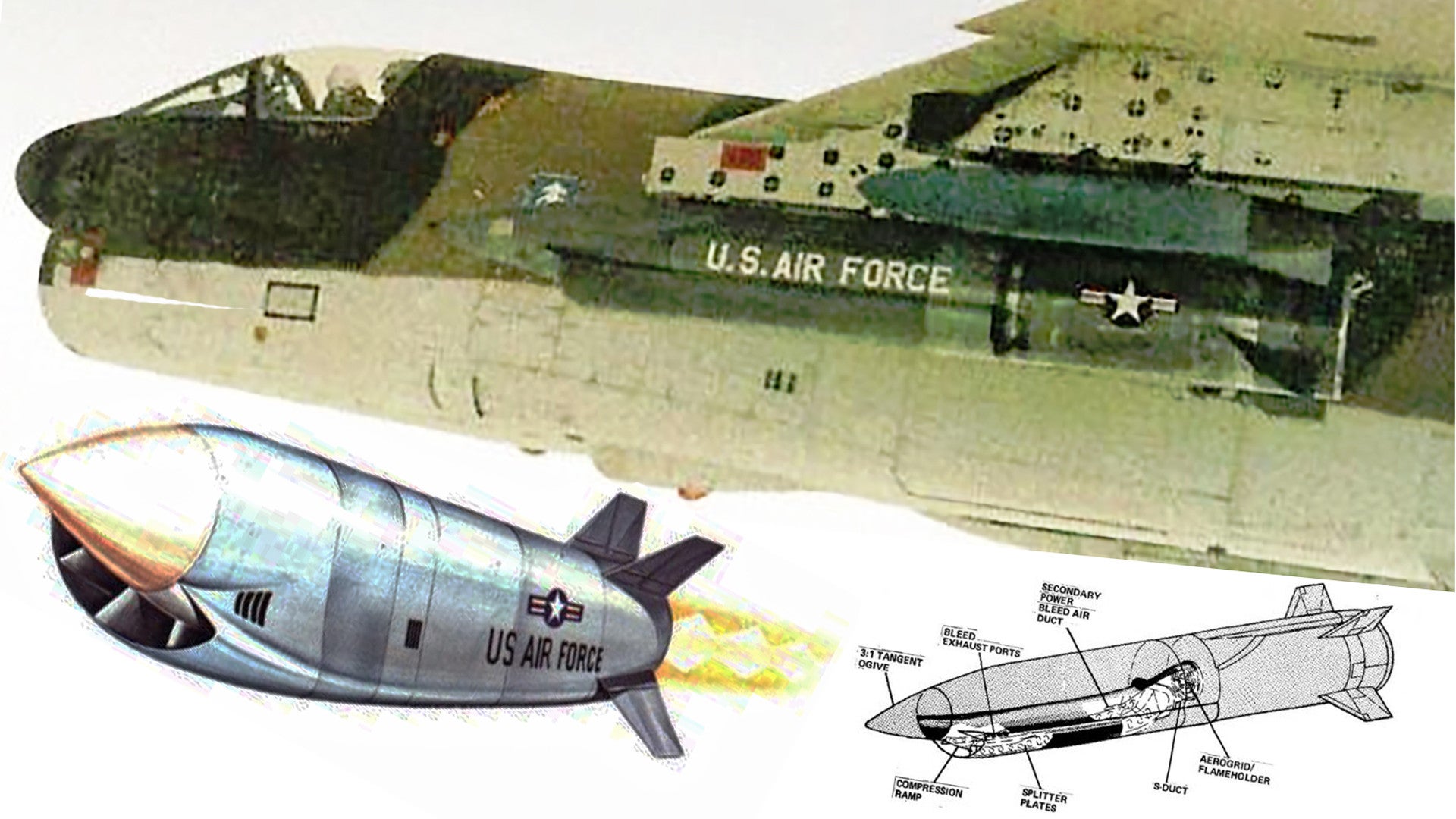Throughout the Cold War, the U.S. Air Force continually faced questions about whether its strategic bombers could make it past Soviet defenses to drop their nuclear payloads if World War III were to break out. The service experimented with and fielded a variety of different weapons and adopted different tactics over the years, all with the aim of ensuring these aircraft were as protected as possible from enemy aircraft and anti-aircraft threats as they flew to their targets.
In the 1970s, the Air Force began work on a new nuclear-tipped stand-off missile, a design in many ways far ahead of its time and capable of near hypersonic speeds. Its purpose was to nuke enemy air defenses as the bombers snaked their ways to their targets, but it also had a relatively exotic secondary role—shooting down Soviet airborne early warning and control aircraft.
The Air Force awarded the initial design study contract for this new weapon concept, eventually known as the Advanced Strategic Air-Launched Missile (ASALM), in 1971, according to an official history. At that time, the AGM-69A Short Range Attack Missile (SRAM), which you can read about in more detail in this past War Zone piece, was in the final stages of development. The SRAMs, each of which had a W69 thermonuclear warhead with a yield of around 200 kilotons, gave the Air Force’s B-52 bombers and FB-111 Aardvark combat jets an immediate means of engaging Soviet surface-to-air missile sites along their flight paths when they entered service the following year.
Coupled with low-level flight profiles, the SRAMs would hopefully make sure the B-52s and FB-111s successfully penetrated through Soviet defenses. The SRAMs themselves could also be used to conduct more general strikes if any were left over by the time the planes reached their designated target areas.
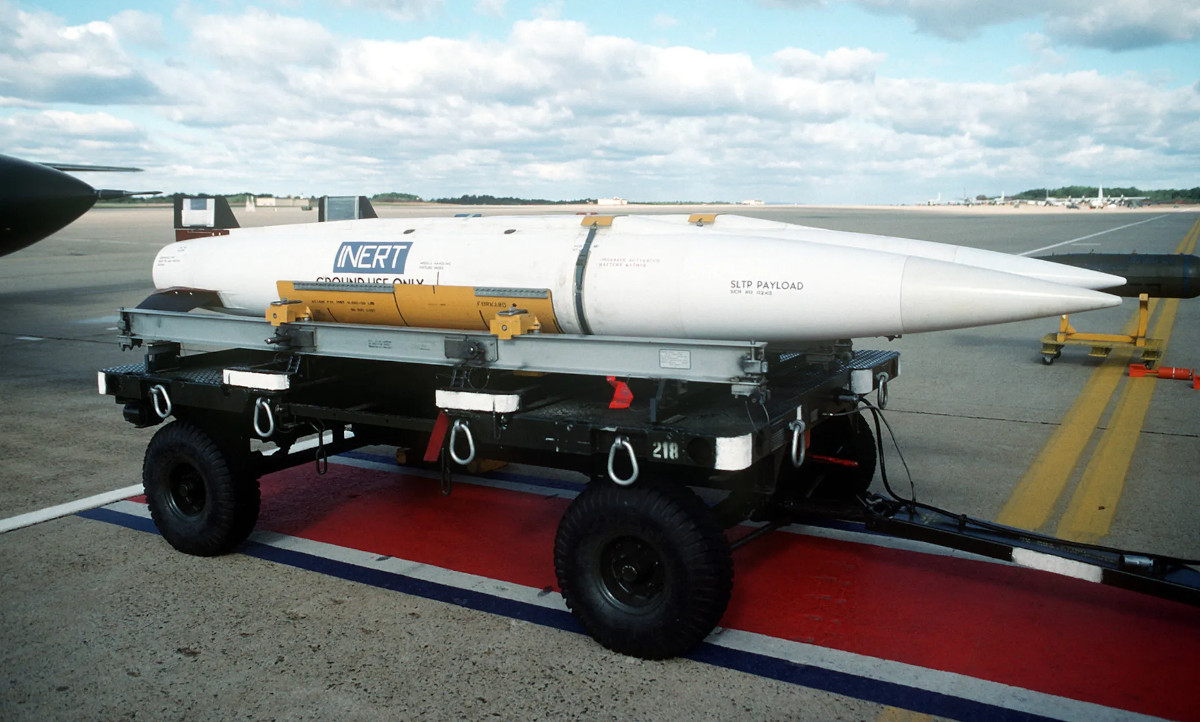
However, even as work on the AGM-69A progressed, the Air Force was already looking ahead to successors. The Nuclear Weapons Databook, Volume 1, published in 1994, says that ASALM, at least in concept, dated back to at least 1968, a year before the first powered flight of a SRAM prototype. It was an outgrowth of earlier projects referred to as the Bomber Defense Missile (BDM) and Multi-Purpose Missile (MPM), according to that book.
After awarding the initial design contract for the missile in 1971, the Air Force further hired contractors to explore ramjet propulsion options that would give the missile at least near-hypersonic speed, according to The Evolution of the Cruise Missile, which the Air Force itself published in 1985. Hypersonic speed is defined as anything above Mach 5.
The ASALM concept, also sometimes referred to as the Advanced Supersonic Air-Launched Missile, promised a missile with a higher top speed and greater range than the SRAM. This, in turn, would allow bombers and strike aircraft to engage threats from further away and faster, making it more difficult for the enemy to react and expanding the decision-making time and survivability of the launching aircraft’s crew.
The Air Force ultimately settled on some form of rocket ramjet as the desired propulsion method. ASALM used a rocket ramjet configuration in which a rocket booster propels the overall system to an optimal speed for a air-breathing ramjet engine to takeover. The empty rocket motor casing serves as the combustion chamber for the ramjet.
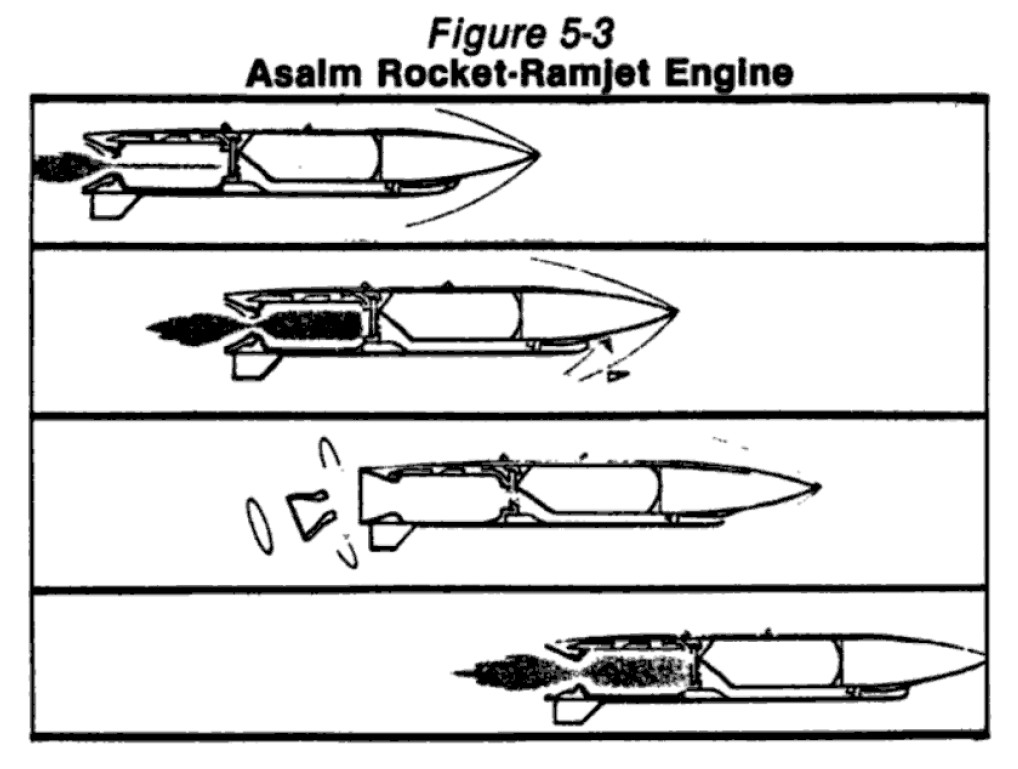
The eventual goal was for the ASALM to be able to cruise at around Mach 4.5 and have a maximum range of up to 300 miles. The SRAM had a top speed of Mach 3 and a range of 100 miles.
In 1972, the Air Force issued more contracts for studies of the propellants that the ASALM would use, as well as to explore guidance system options. Two years later, the service held a competition to select a defense contractor to put all of the system’s components together into an actual missile. A key requirement was for the final design to have the same general form factor as the SRAM and be able to use the same launchers without any modification, including a rotary launcher that fits inside the B-52’s bomb bay. The B-1A bomber, then in development, was also expected to be able to carry this same internal launcher.
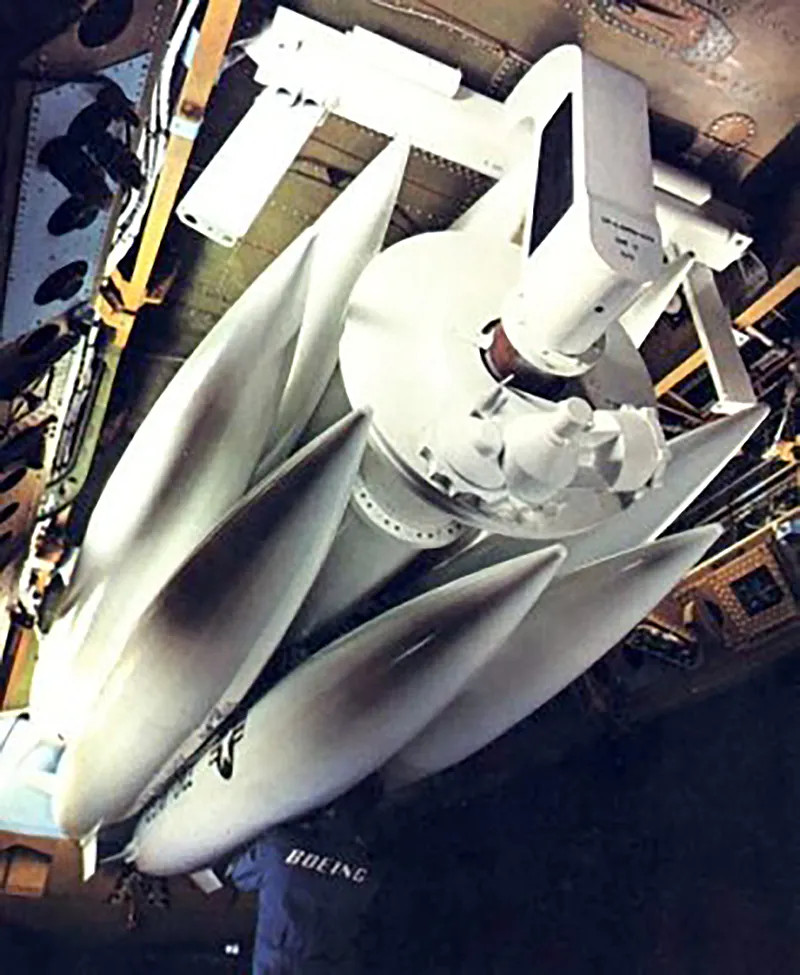
Martin Marietta ultimately beat out a competing proposal from McDonnell Douglas. Both companies had previously run their own internal competitions to select a subcontractor to build the rocket ramjet propulsion system, with both settling on Marquardt, an established name in ramjet development, according to a 1976 Aviation Week article on the project. Between 1976 and 1977, the Air Force also restructured the program in order to try to accelerate it.
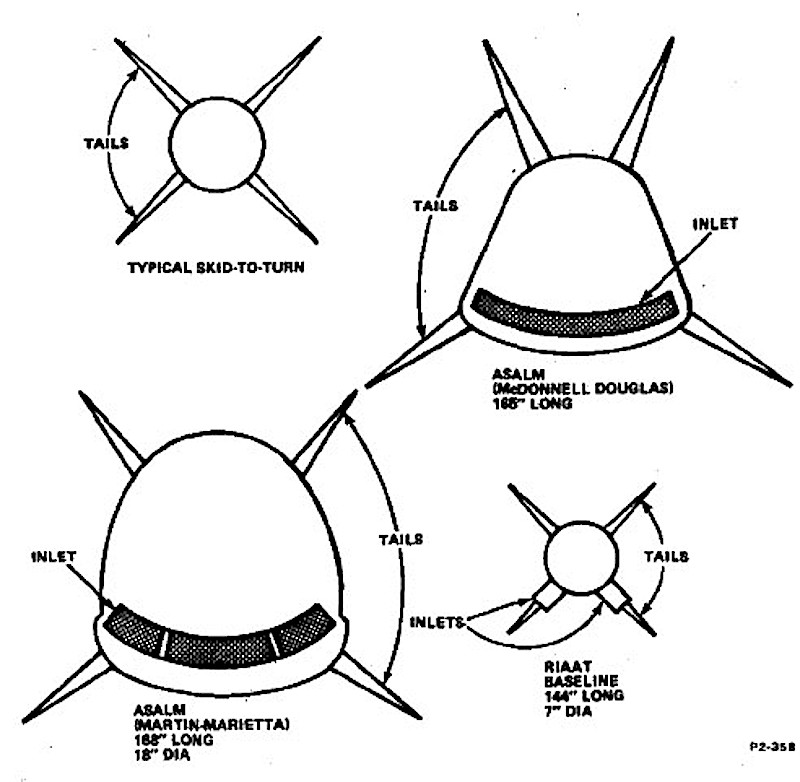
Despite not being selected as the prime contractor, McDonnell Douglas joined Martin Marietta’s division in Orlando, Florida, along with Boeing, in the development of the missile’s airframe and other associated technology, according to the 1979-1980 edition of Jane’s Weapon Systems. Raytheon and Rockwell International also contributed to the development of the guidance systems.
It’s not clear exactly when this occurred, or if it had been the case from the very beginning, but by that time the program had also gained the requirement for the missile to be able to perform a secondary air-to-air mission. However, the available sources, primary and secondary, do generally agree that the ASALM was primarily intended to be a direct replacement or follow-on to the SRAM.
In 1977, the Senate Armed Services Committee even reportedly asked the Air Force if it might be a viable successor to the subsonic AGM-86 Air-Launched Cruise Missile (ALCM), which was also in development at the time, according to an article that year in Aviation Week. It’s hard to see how this would’ve been possible given that the ALCM’s maximum range was significantly greater.
The Soviet Union’s development of a more capable airborne early warning and control aircraft in the 1970s as a replacement for the Tupolev Tu-126 Moss, a derivative of the Tu-114 airliner that had first entered service in 1965, seems to have been an important driver behind the additional air-to-air requirement.
The new Beriev A-50 Mainstay, based on the Ilyushin Il-76 Candid airlifter, flew for the first time in 1978. The Vega radar on the A-50 notably had a look-down capability, unlike the Tu-126’s Liana radar, which NATO also referred to as Flat Jack. This meant the Mainstays would be able to spot and track bombers and other strike aircraft flying at low levels among the ground clutter, the established U.S. Air Force infiltration tactic at the time, and vector fighters to intercept them and otherwise alert the rest of the Soviet air defense network. Knocking out or otherwise negating enemy early warning capabilities in the air, as well as those on the ground and in space, early in a major conflict was, and remains, an important task, in general, to ensure that the initial waves of strikes are as successful as possible.
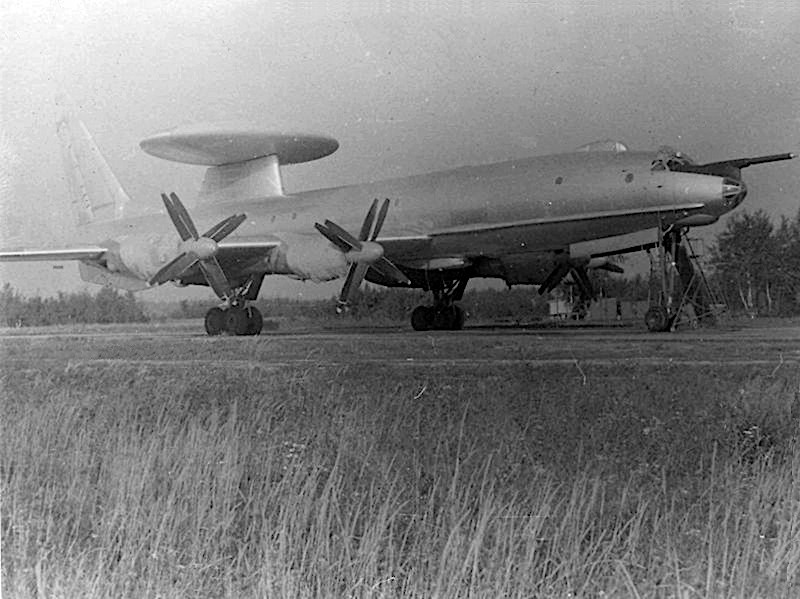
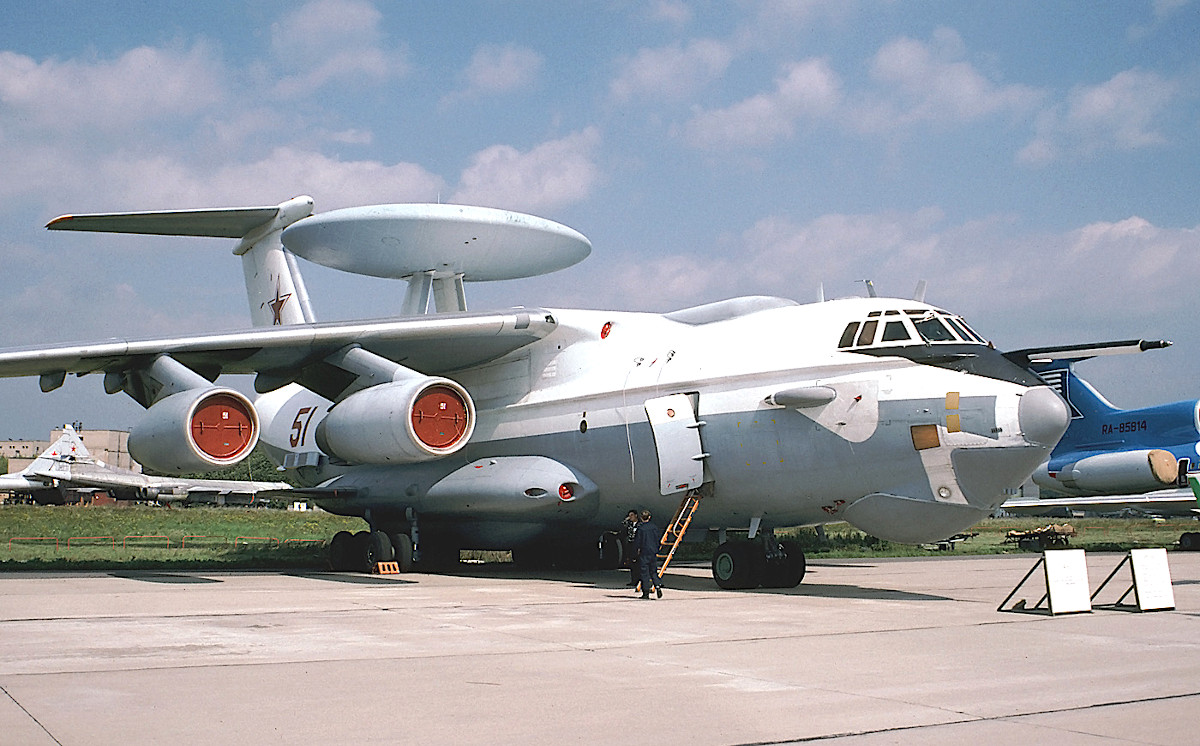
“One of the purposes of this missile would be to destroy the projected SUAWACS [Soviet Union Airborne Warning And Control System Aircraft], thereby degrading the Soviet Union’s potentially effective forward defense against both bombers and cruise missile carriers,” then-Secretary of Defense Harold Brown told members of Congress in a report in January 1980. “In addition, the ASALM would provide an air-to-ground capability to be used in the primary strike mission as a possible replacement or follow-on to the currently deployed short-range attack missile (SRAM).”
The ASALM’s multi-role capability would come from a guidance system capable of either homing in on a target’s electronic emissions or using an active radar seeker to zero in on the threat. The former functionality would be the primary means of engaging hostile air defense radars on the ground, similar to more traditional anti-radiation missiles, while the latter capability would be used in part with the radiation homing seeker as a way of engaging an airborne early warning and control aircraft over great distances and it would be essential if a conventionally-armed ASALM was ever introduced in the air-to-air role.
As we understand it, a thermonuclear warhead, possibly the same W69 used on the SRAM, was the missile’s primary payload. This would have meant accuracy would not necessarily have been paramount in either an air-to-ground or air-to-air engagement. It isn’t clear just how far the idea of a conventionally armed ASALM got. It is possible that a nuclear-armed ASALM with just an anti-radiation seeker would have been able to get close enough to a SUAWACS to take it down without the need for an active radar seeker. Also, a built-in inertial navigation system could also help guide the missile to the general target area.
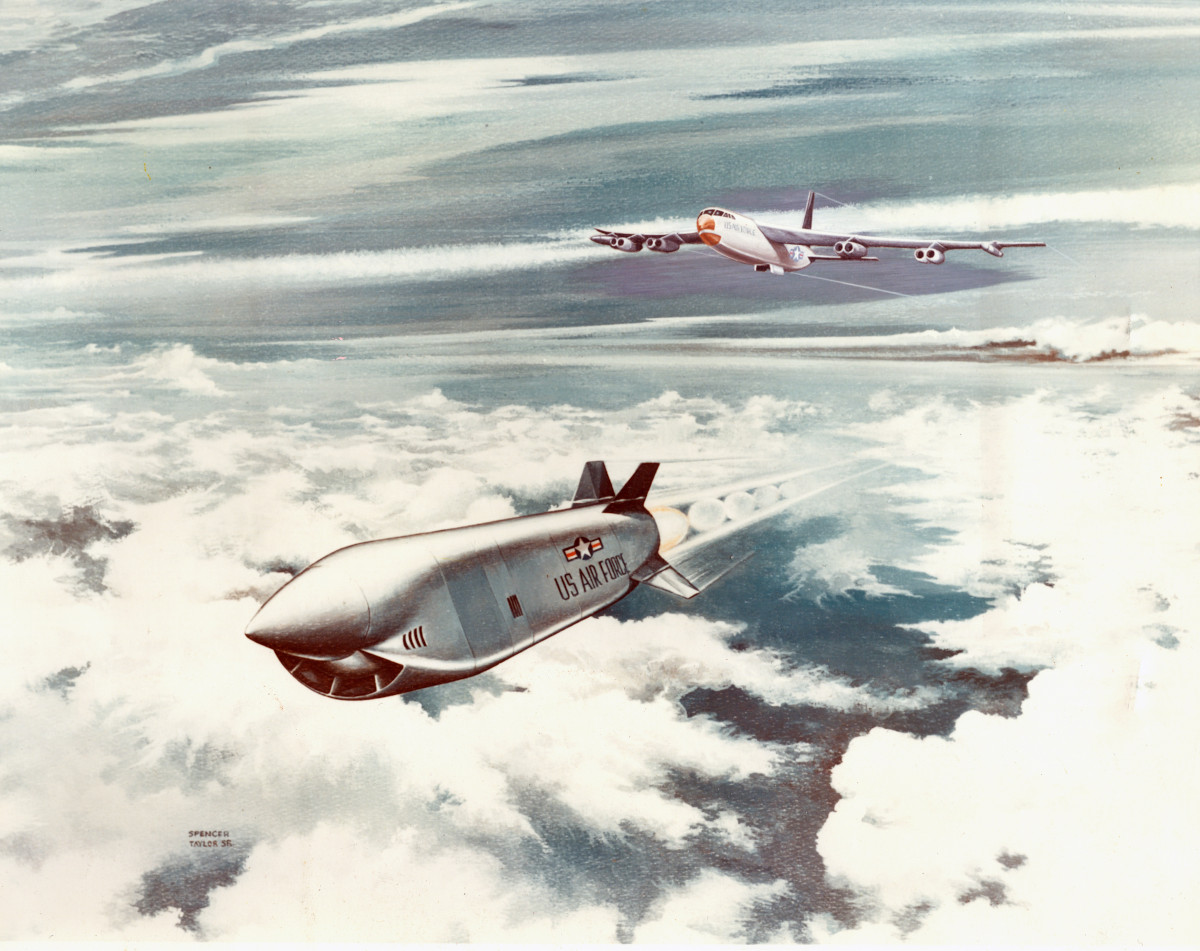
By the end of the 1970s, the ASALM was well in development. Starting in October 1979 and running through May 1980, the service conducted a Propulsion Technology Validation (PTV) effort consisting of seven launches of test articles with no warhead or guidance system, all of which were deemed successful.
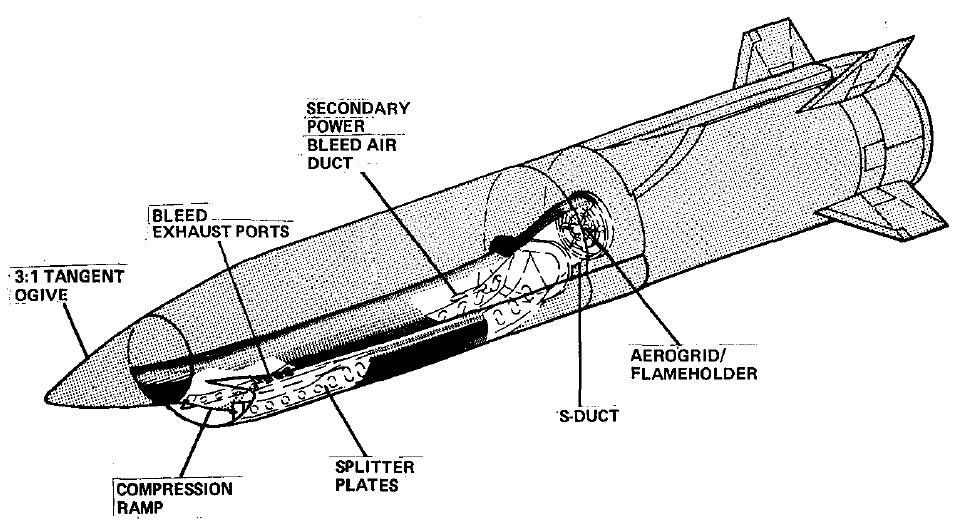

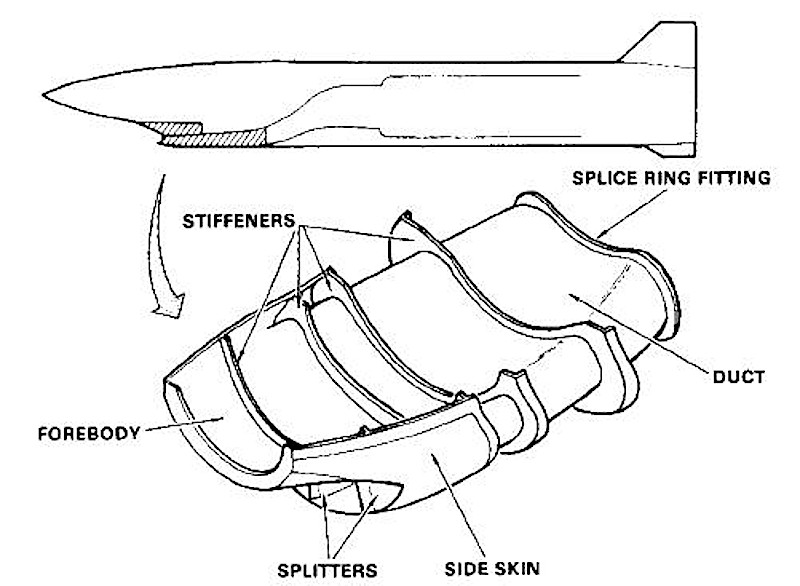
During one of the tests, the PTV test vehicle actually exceeded expectations, reaching a hypersonic speed of Mach 5.5 at an altitude of 40,000 feet. In at least one of the launches, an A-7 Corsair II combat jet was used as the launch platform, indicating the Air Force may have considered expanding the number of aircraft certified to carry the weapon. Mockups of the ASALM missiles were also shown mounted on the rotary launcher for the B-52.
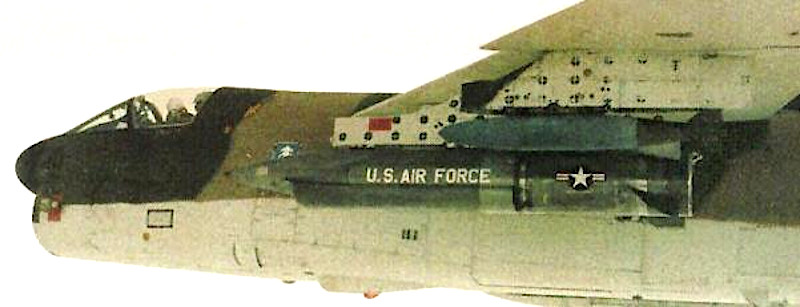
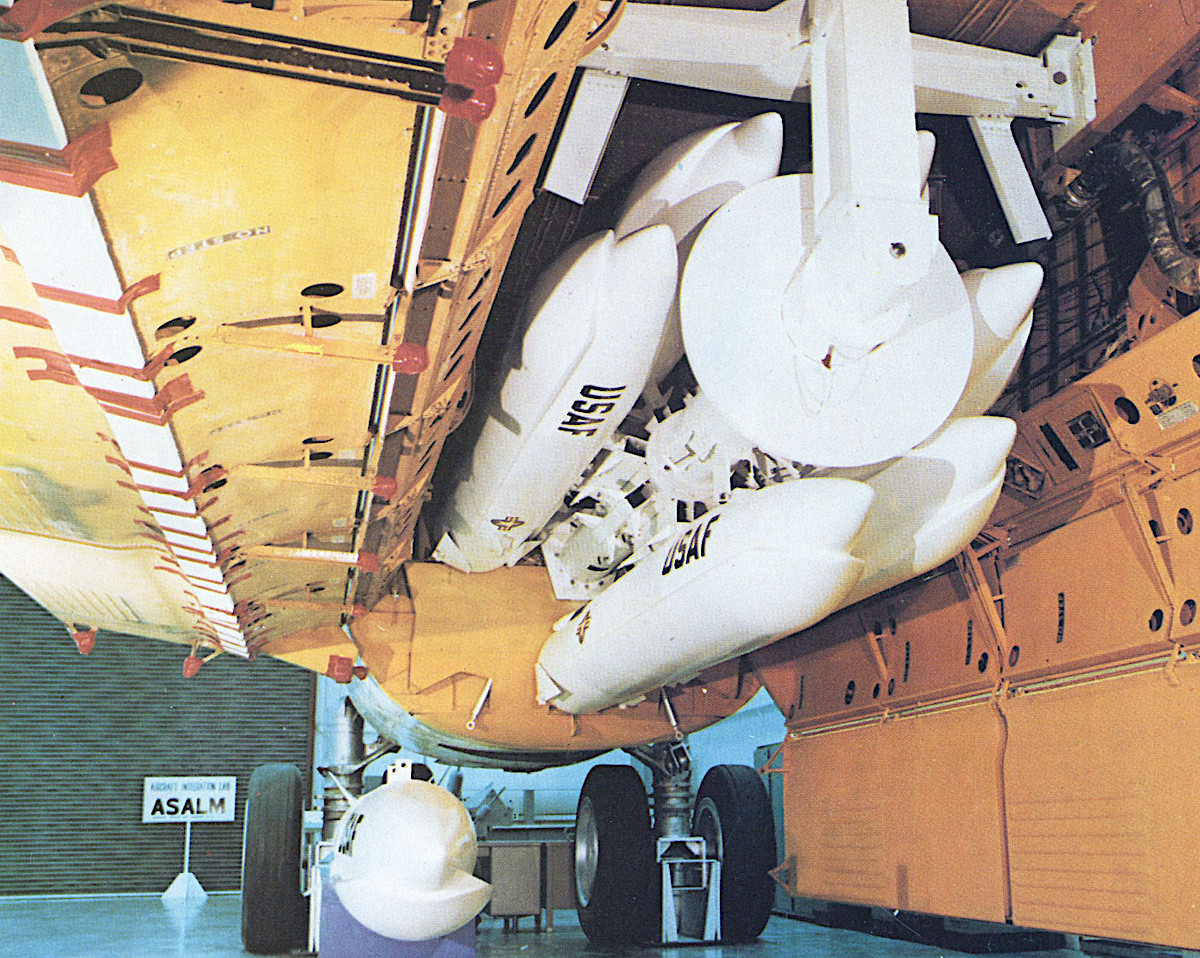
Early concept art had also depicted the B-1A bomber, which President Jimmy Carter canceled development of in 1977, launching the weapon. The B-1 program would come back to life in 1981 under President Ronald Reagan, leading to the refined B-1B variant.
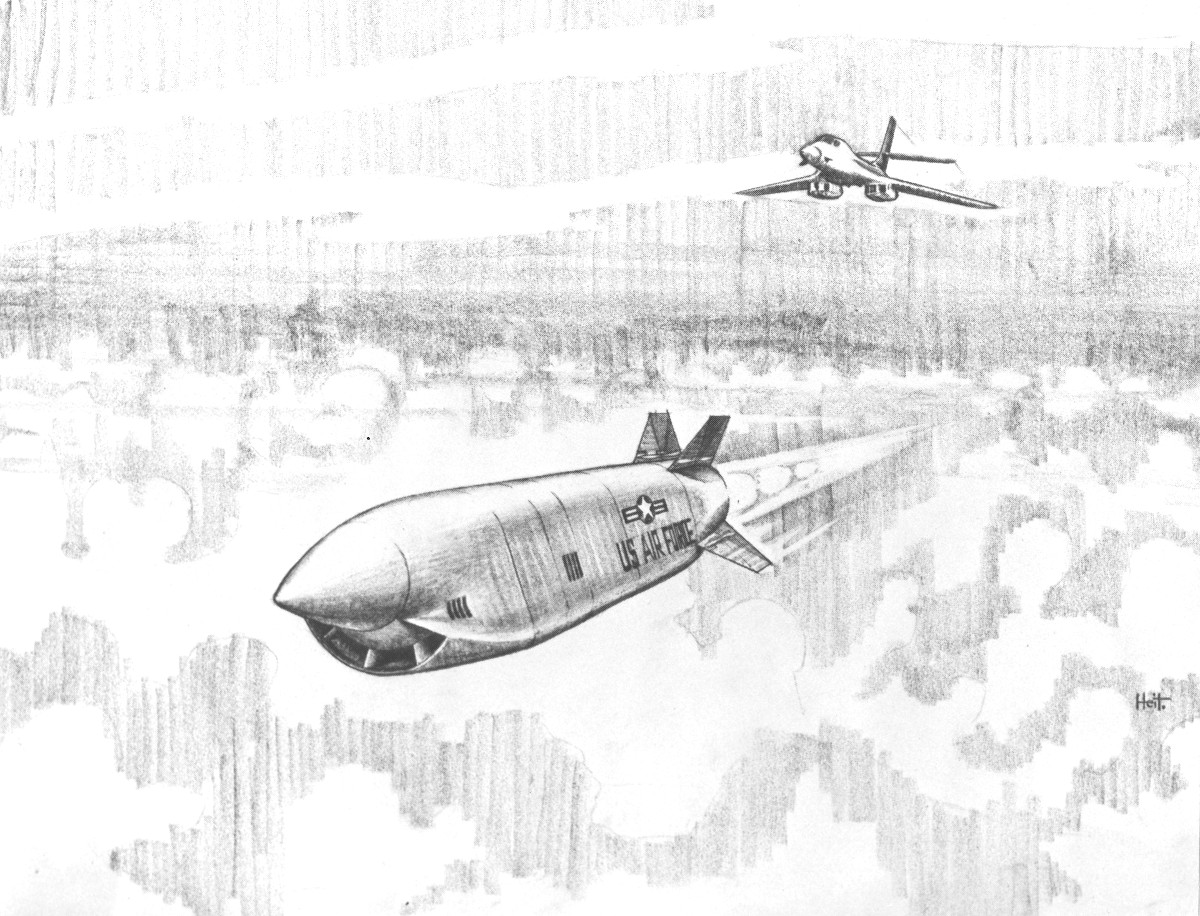
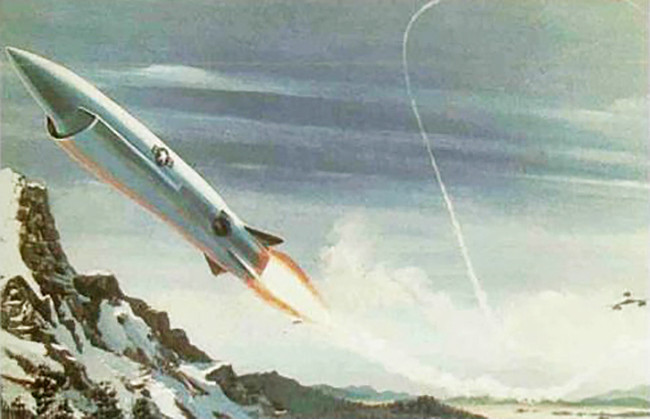
However, by 1980, the Air Force had already scaled back the ASALM effort, treating it more as a proof of concept or technology demonstration project. There has been some suggestion that budget constraints played a role in declining interest in the weapon. As of April 1980, the Air Force estimated the program would cost at least $140 million, more than $435.5 million in 2020 dollars, and it was looking to get $25.7 million, or nearly $80 million today, in the upcoming 1981 Fiscal Year budget. However, the defense budget for that fiscal year was substantially larger than it had been in the preceding three years, a sign of the further defense buildup to come under President Ronald Reagan.
The more likely explanation seems to be that the ASALM fell victim to a mix of technical difficulties and competing priorities. Jane’s Weapon Systems says that General Alton Slay, then head of Air Force Systems Command, had told members of Congress back in 1978 that this missile was, in part, a hedge against the failure of the AGM-86, which you can read about more in this past War Zone piece. It’s possible that Slay might’ve been referring to a larger derivative of the ASALM, as well. Regardless, production of the AGM-86 started in 1980 and it began to enter service in 1982.
By the early 1980s, the service was also well in the process of developing a dedicated SRAM successor, the AGM-131A SRAM II, which was itself canceled in 1991. There were also a number of stealthy cruise missile projects at around the same time, which culminated with the AGM-129A Advanced Cruise Missile (ACM), which you can read about more in this previous War Zone story.
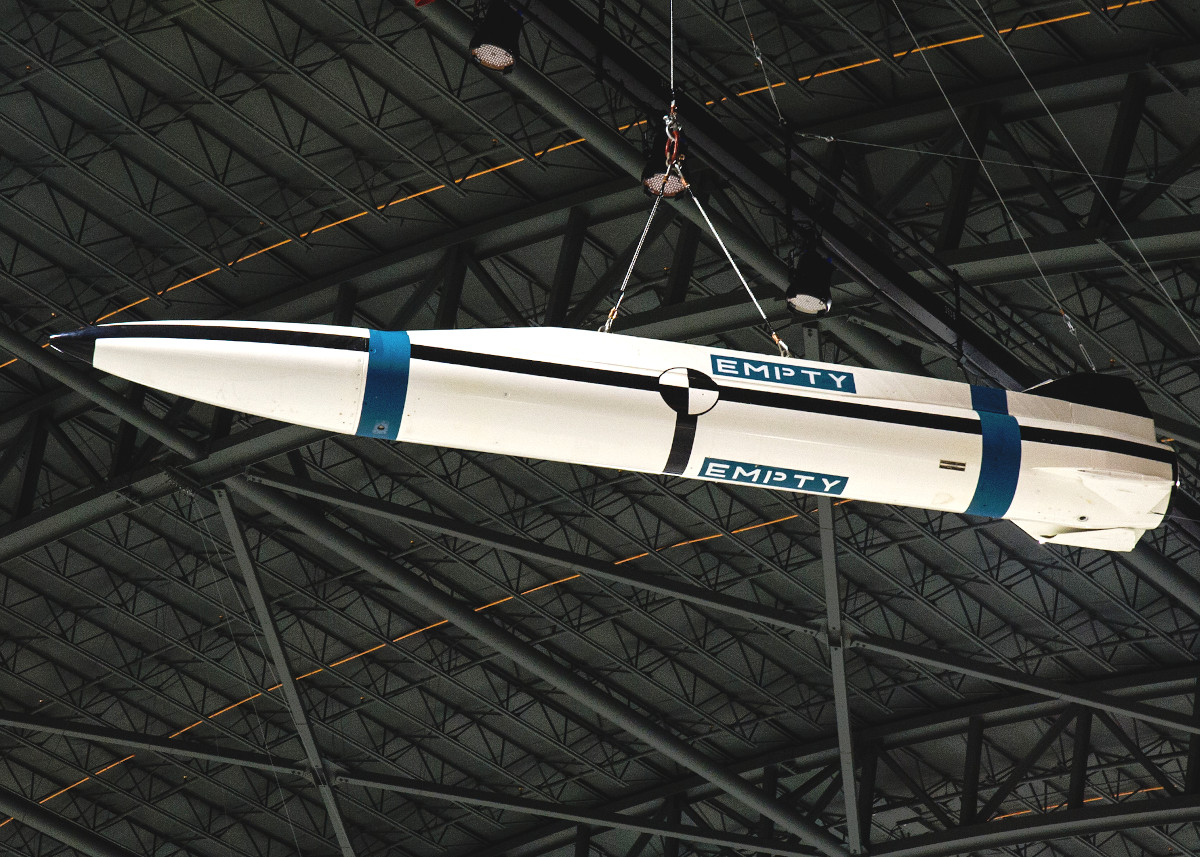
In addition, while the PTV flight tests were successful, there were concerns about the rocket ramjet’s ability to perform consistently at low altitudes, where the air is thicker and there is more drag on any flying object. The missile could have had difficulty reaching an optimal speed and altitude for its air-breathing engine to function properly when launched from a bomber or other aircraft flying at a very low level to otherwise reduce the threat from enemy air defenses. However, Martin Marietta said that it felt it had solved those low altitude launch problems by 1980.
Questions about potential targeting difficulties when using the missile against aerial threats also appear to have been a contributing factor. “If the threat is sophisticated, we’re looking for extremely long-range launches at maximum range, and we’ll have to shrink down the package and subsystems,” a U.S. government official told Aviation Week in 1980. “It would be at the very extreme of the radar horizon.”
The complete concept of operation that the Air Force envisioned for the ASALM isn’t clear. Soviet AWACSs would not have been static targets, unlike air defense sites on the ground, and Air Force bombers and other strike aircraft would not have had had the kind of sensors, such as long-range radars, necessary to spot and track them themselves at extended ranges. This issue also cropped up during tests regarding the potential use of the F-117 Nighthawk stealth combat jet in the air-to-air role, which you can read about more in this recent War Zone piece.
Having some other platform locate the AWACS first would have been one method, but stand-off targeting of threats deep inside heavily defended Soviet areas, in the air and on the ground, was definitely a general issue at the time due to limited networking capabilities and other factors. The difficulty of finding targets in denied areas remains an issue today, as you can read about more here.
Another option would have been to fire the missile into an area where an AWACS would likely be operating and let the missile either find its target by using the passive homing capabilities it would employ to find radars on the ground or its active radar seeker. With only a limited number of ALASMs on board, it’s not clear how willing the crew of a bomber or other strike aircraft might have actually been to fire them without knowing for sure they’d find a target, rather than saving them for engaging positively identified threats.
There also seemed to be questions about whether the new Soviet AWACS would actually enter service and, even if it did, whether it might not be possible to employ a mixture of other capabilities and tactics, including the improved SRAM II and electronic warfare systems, to otherwise ensure bombers and other strike aircraft made it to their targets. Advanced stand-off weapons, such as the stealthy AGM-129, would have also offered alternative options.
“The SUAWAC is projected but is not actually in being. … Even if the threat develops as projected, [the Office of the Secretary of Defense] is not convinced ASALM is the only solution,” one contemporary position paper reportedly stated. The first Beriev A-50 ultimately entered service in 1984.
It’s not clear exactly when it occurred, but the ASLAM project was finally scrapped for good sometime in the 1980s. Martin Marietta did pitch derivatives for other roles and McDonnell Douglas did the same with its losing design.
This included a version that Martin Marietta presented to the U.S. Navy as a supersonic aerial target in 1983. The Navy did hire the company the following year to develop what subsequently became known as the YAQM-127A Supersonic Low-Altitude Target (SLAT). That design fared poorly in testing, with only one of eight launches between 1987 and 1991 being deemed successes. The Navy canceled this program, too, eventually buying a derivative of an actual Soviet-designed surface-to-air missile for use as an aerial target. You can read more about the MA-31, a cooperative effort between McDonnell Douglas, and later Boeing, and Russia’s Zveda-Strela, in this recent War Zone piece.
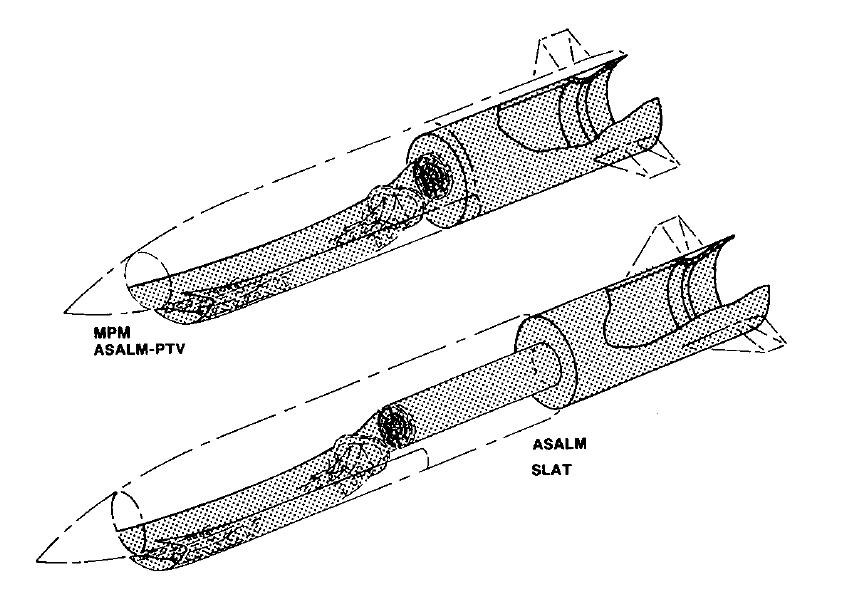
Martin Marietta did propose ship-launched derivatives to the Navy, as well. These designs were referred to variously as the Outer Air Battle Missile and Outer Perimeter Defense Missile. It’s not clear whether the naval versions would have had nuclear or conventional warheads, but they were described as being intended for use as high-speed surface-to-air missiles that could shoot down incoming Soviet aircraft before they got close enough to launch anti-ship missiles.
McDonnell Douglas also proposed a submarine-launched missile based on its proposed ASALM design that would carry a torpedo as payload and release it over the suspected location of an enemy sub. This was similar in some general respects to the submarine-launched UUM-44 Submarine Rocket (SUBROC) and the ship-launched RUR-5 Anti-Submarine Rocket (ASROC) that were in service at the time, but would have had massively longer range.
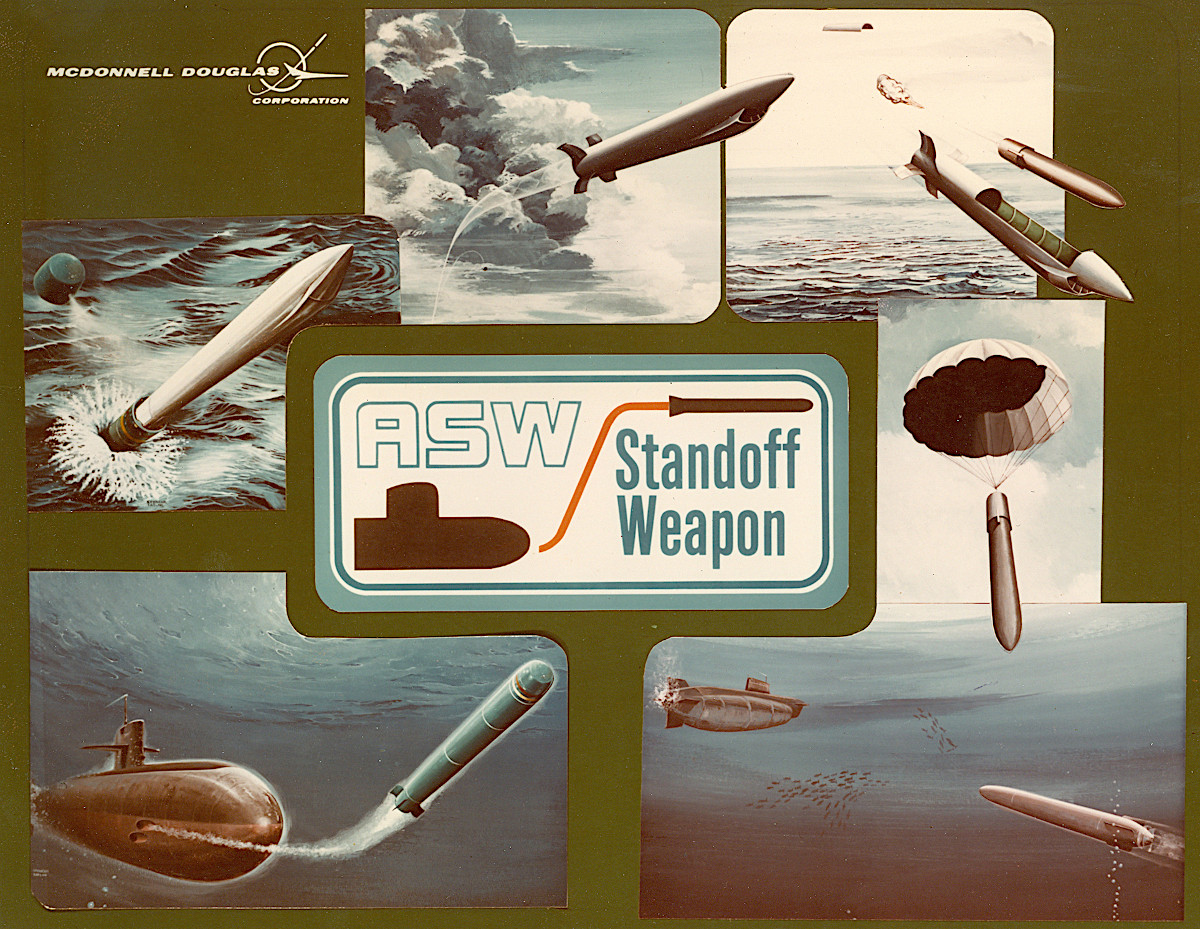
The general requirements that led to the development of the ASALM, especially the desire for a long-range “AWACS killer” missile, certainly didn’t go away. The United States, as well as its potential competitors, have continued to explore air-to-air weapons to fill this role in the decades since. Russia and China, in particular, have developed various missiles for this mission and continue to do so.
In the mid-2000s, there were reports that Russia, in cooperation with India had started work on a derivative of the 1990s-era KS-172, which eventually became known as the K-100, a very long-range air-to-air missile intended, at least in part, for the AWACS hunting role. In 2016, images emerged of a Chinese J-16 fighter jet carrying a large air-to-air missile, now sometimes referred to as the PL-21, which could have a similar intended mission set.
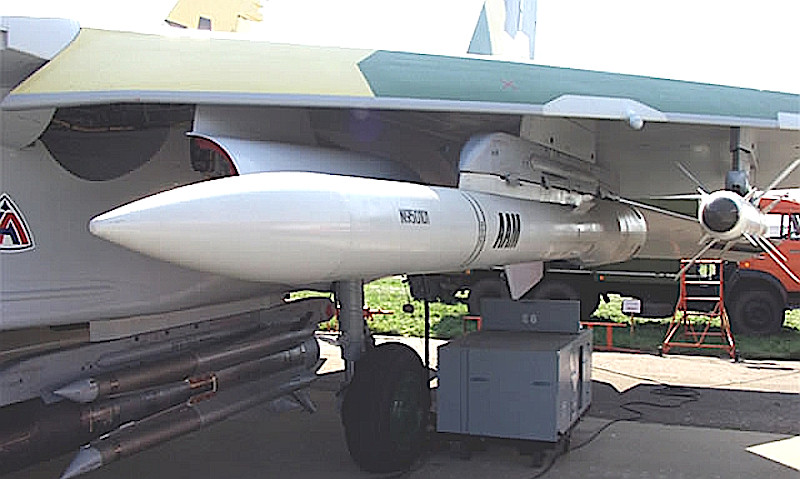
The U.S. military itself is now in the process of developing the AIM-260, its own very long-range air-to-air missile, as well as the separate Long Range Engagement Weapon (LREW), another air-to-air weapon that could have a counter-AWACS role. There has also been steady progress in the development of an improved supersonic anti-radiation missile, the AGM-88G Advanced Anti-Radiation Guided Missile-Extended Range (AARGM-ER). The AGM-88G will also have more general-purpose air-to-ground capabilities and it’s improved capabilities might even leave the door open for employing it against aerial targets, such as enemy AWACS.
In addition, in the early 2010s, Lockheed Martin, a company that had come into being as the result of a merger between Lockheed and Martin Marietta in 1995, began work on two different anti-ship cruise missiles for the Navy. One of these was the subsonic AGM-158C Long-Range Anti-Ship Missile (LRASM), which began life as the LRASM-A.
There was, however, a separate effort to develop a supersonic companion to that weapon, called the LRASM-B, the design of which bears more than a passing resemblance, at least visually, to that of the ASALM. It seems hard to believe the LRASM-B was not at least a spiritual successor to the earlier Cold War missile. Officially, work on the LRASM-B ended in 2013, but there is the possibility that it or a further derivative of it might have evolved into the top-secret Sea Dragon supersonic submarine-launched anti-ship cruise missile, which you can read about more in this past War Zone story.
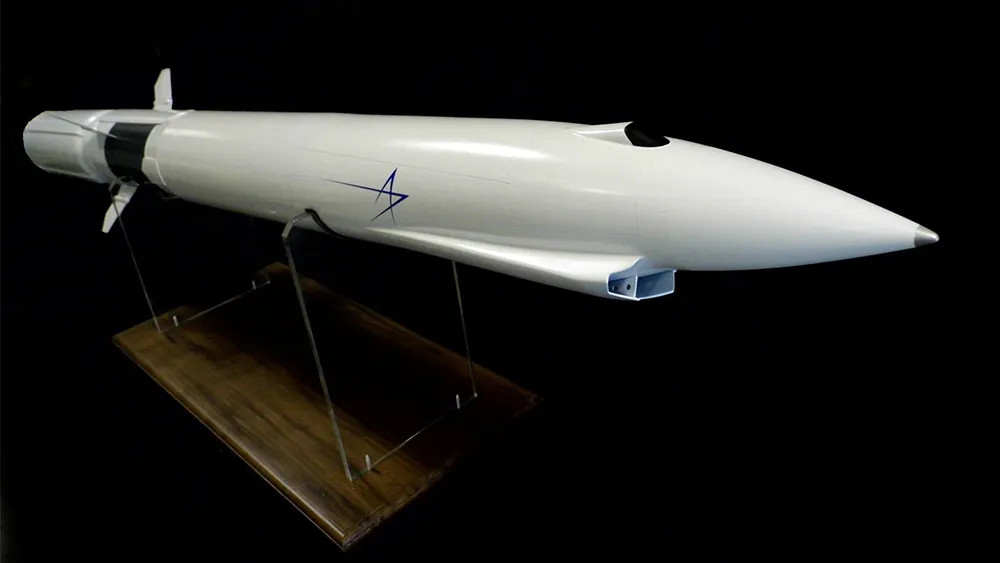
Beyond all this, there has also been a more general surge of interest in ramjet-powered air-breathing cruise missiles around the world in recent years. These include, among others, multiple development efforts the U.S. military has in progress and Russia’s work on the 3M22 Zircon, designs that are all expected to boast hypersonic speeds. China is in the process of developing a ground-launched hypersonic cruise missile and is already working on supersonic ramjet-powered weapons in this same category.
All told, the ASALM seems to have been ahead of its time in many respects. With all the developments going on now that we know about, in addition to ones that are almost certainly happening in the classified realm, it seems very possible that we may now see the return of this concept in some form, if it doesn’t exist already.
Contact the author: joe@thedrive.com
